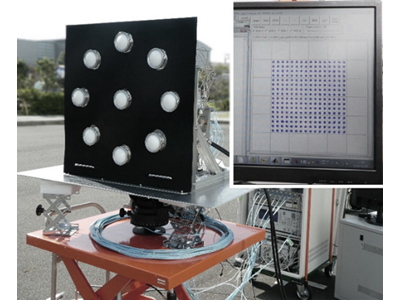NEC has demonstrated real-time, digital, wireless orbital angular momentum (OAM) multiplexing over a 40 m link at E-Band, claiming a world’s first.
OAM has been proposed to increase data rates through limited bandwidth links, a means to add capacity to meet the ever-increasing demand for wireless network capacity for 5G. Traffic volume between 5G base stations is estimated to reach 100 Gbps, which will be challenging to achieve simply by extending existing point-to-point radio technology, such as wider channels, multiple channels or increased modulation complexity. OAM multiplexing, considered a more revolutionary approach, is viewed as a solution for high capacity point-to-point links, where fiber optic connections are not available.
What Is OAM?
An OAM signal has multiple spiral phase fronts, called OAM modes. The shape of each mode is different, making them independent, so multiple OAM modes transmitted simultaneously on the same channel can be separated and demodulated at the receiver. This multiplexing scheme increases the data capacity of a channel.
NEC’s initial demonstration covered a 40 m link at E-Band (71 to 86 GHz) using 256-QAM achieved by multiplexing eight OAM modes. A 7.4 Gbps composite data rate was transmitted, comprising the eight modes, with 8 bits per symbol and a symbol rate of 115 Mbaud.
To support OAM transmission and this initial demonstration, NEC has developed a real-time digital signal processing (DSP) circuit to superpose and separate the OAM modes.
Next Steps
NEC plans to use OAM technology for its iPASOLINK series of microwave and millimeter wave backhaul radios supporting 5G.
By the end of 2019, NEC plans to achieve a spectral efficiency of 128 bps/Hz (eight modes with dual polarization and 8 bits per symbol) over a 100 m transmission link at D-Band (130 to 174.8 GHz). Achieving a 100 m link at D-Band is one of the enablers for 5G backhaul and fronthaul (between central unit aggregating base station and the distributed unit remote station) links.
NEC’s R&D is part of "The Research and Development Project of OAM Mode Multiplexing Radio Enabling Ultra High Capacity Transmission in mmWave Bands” program, funded by the Ministry of Internal Affairs and Communications in Japan.

